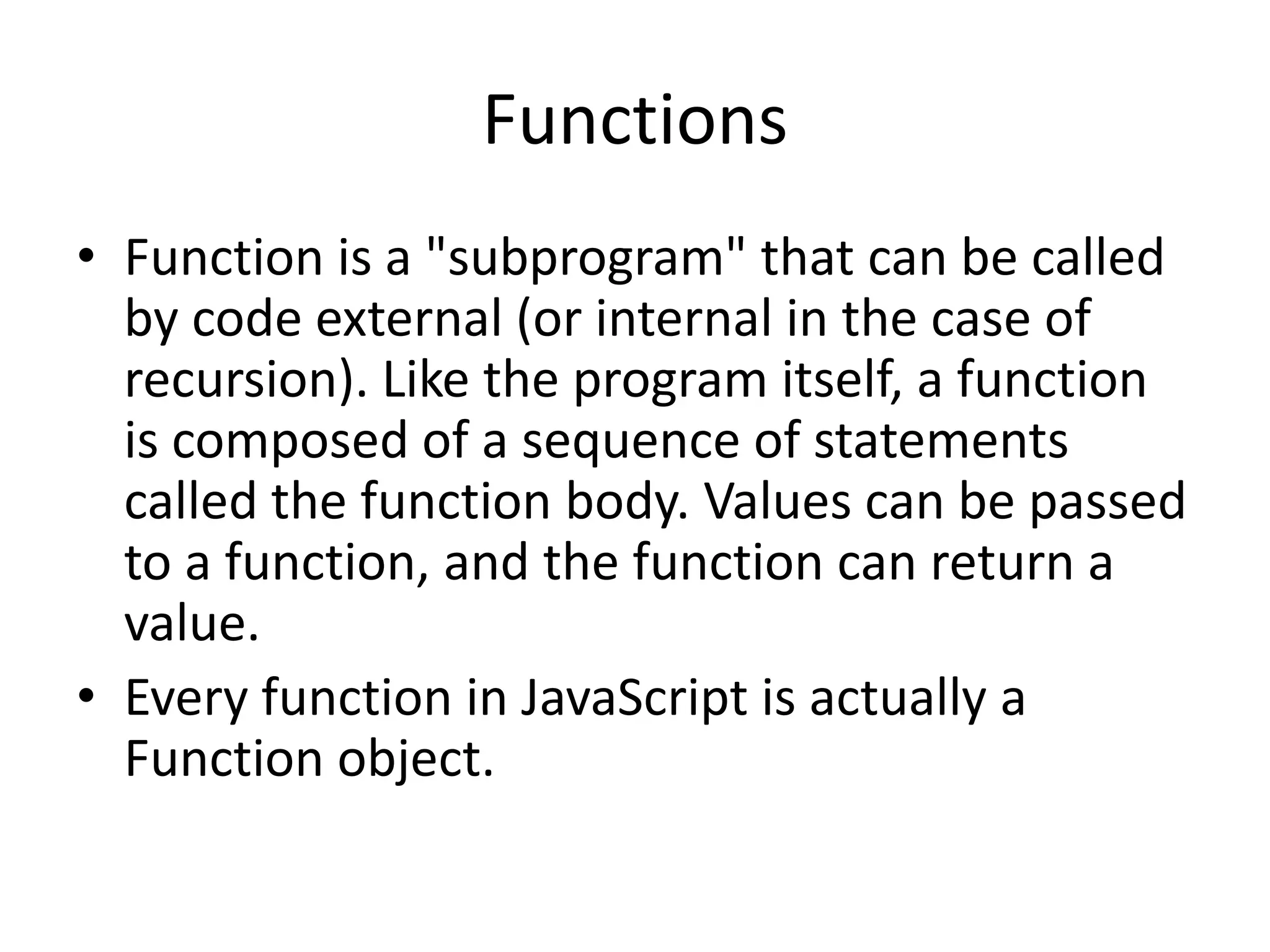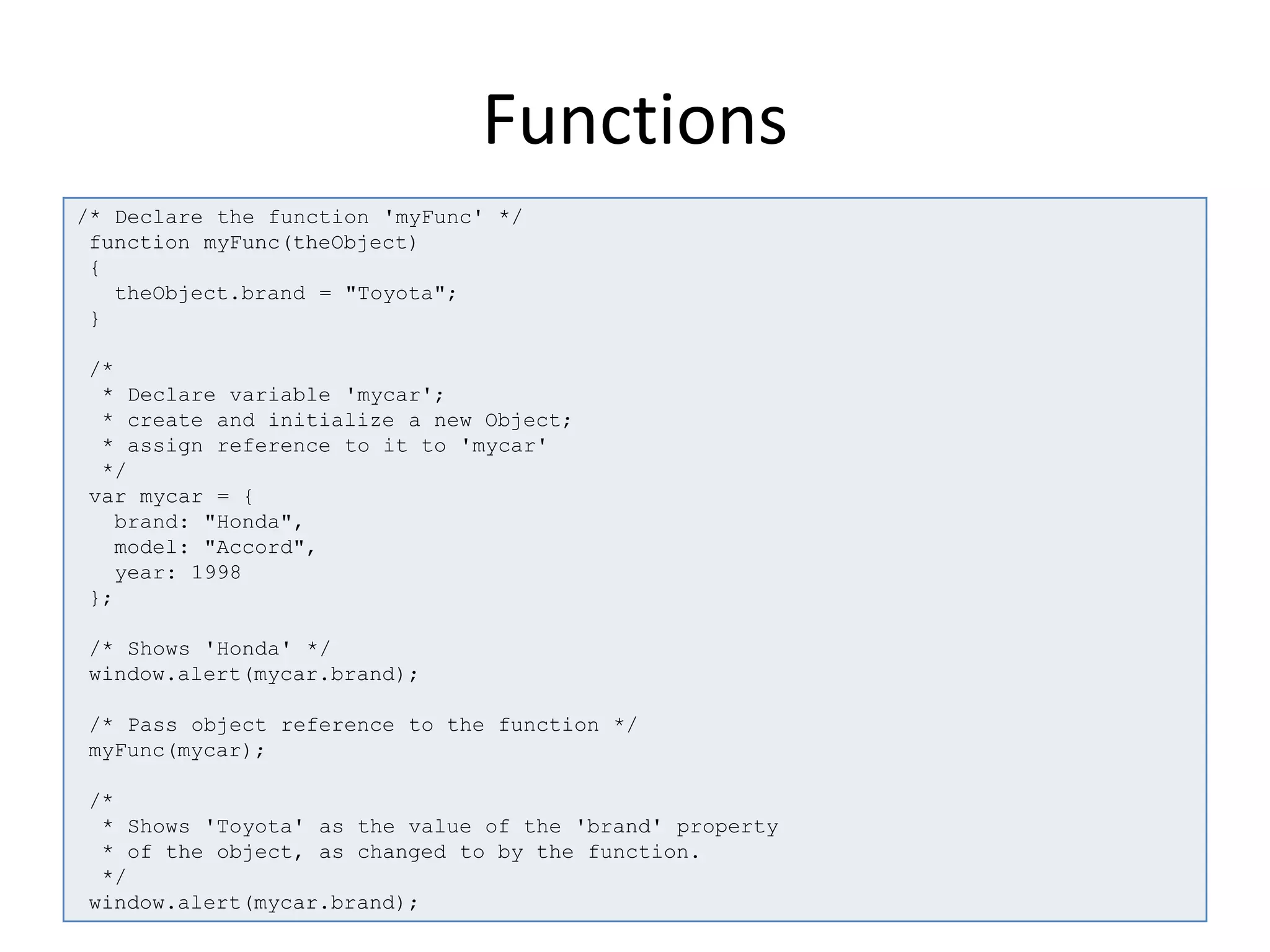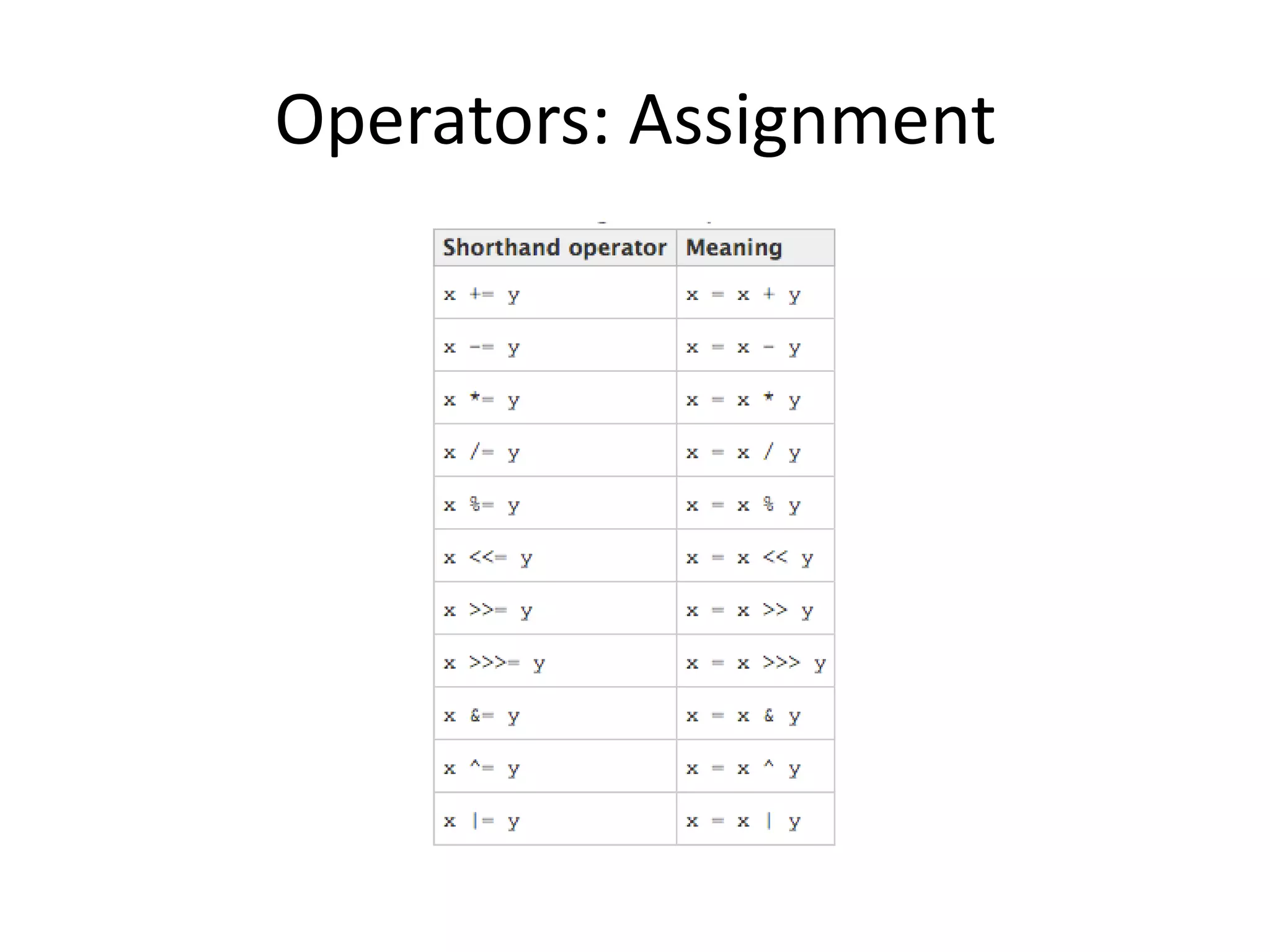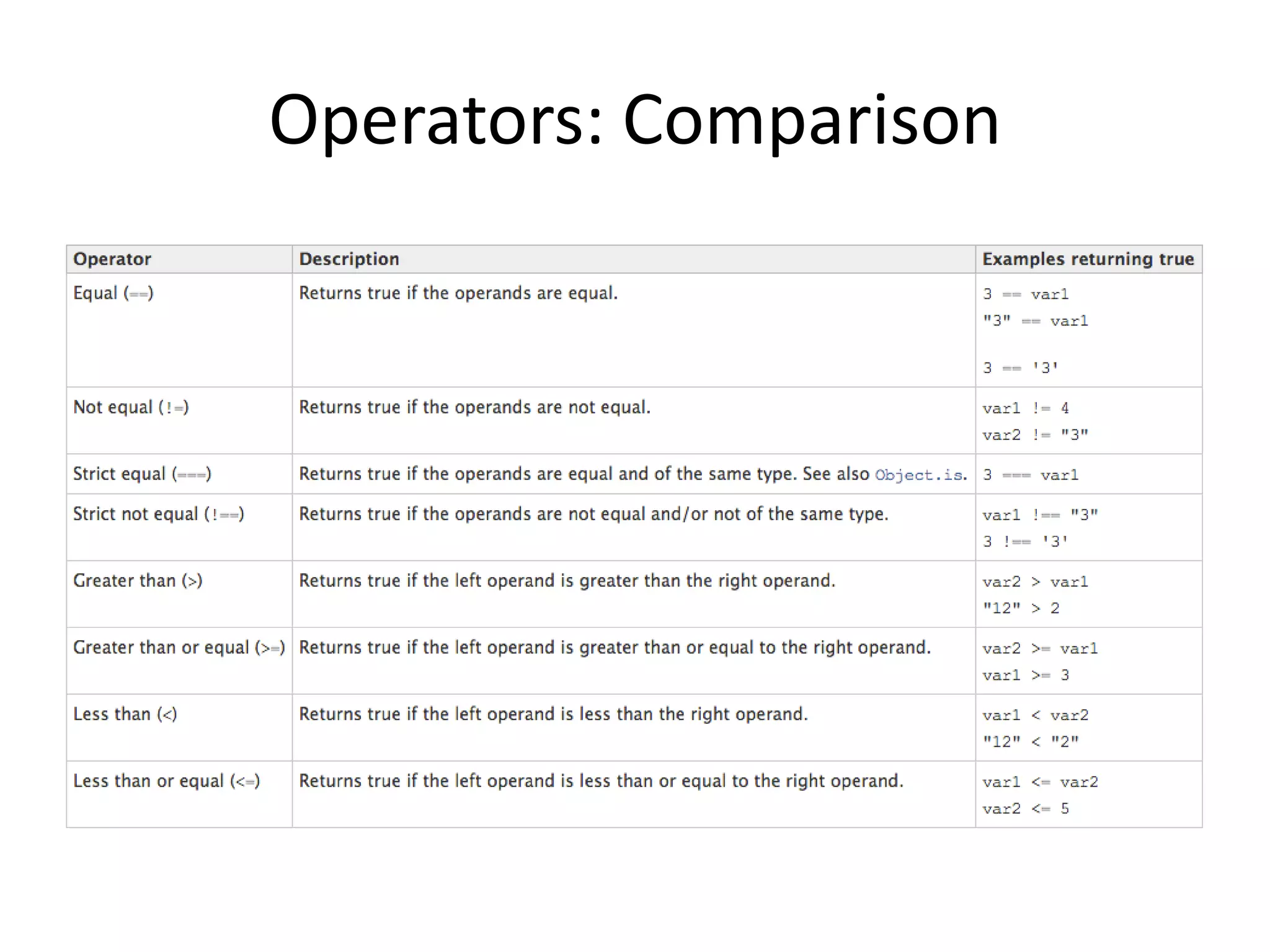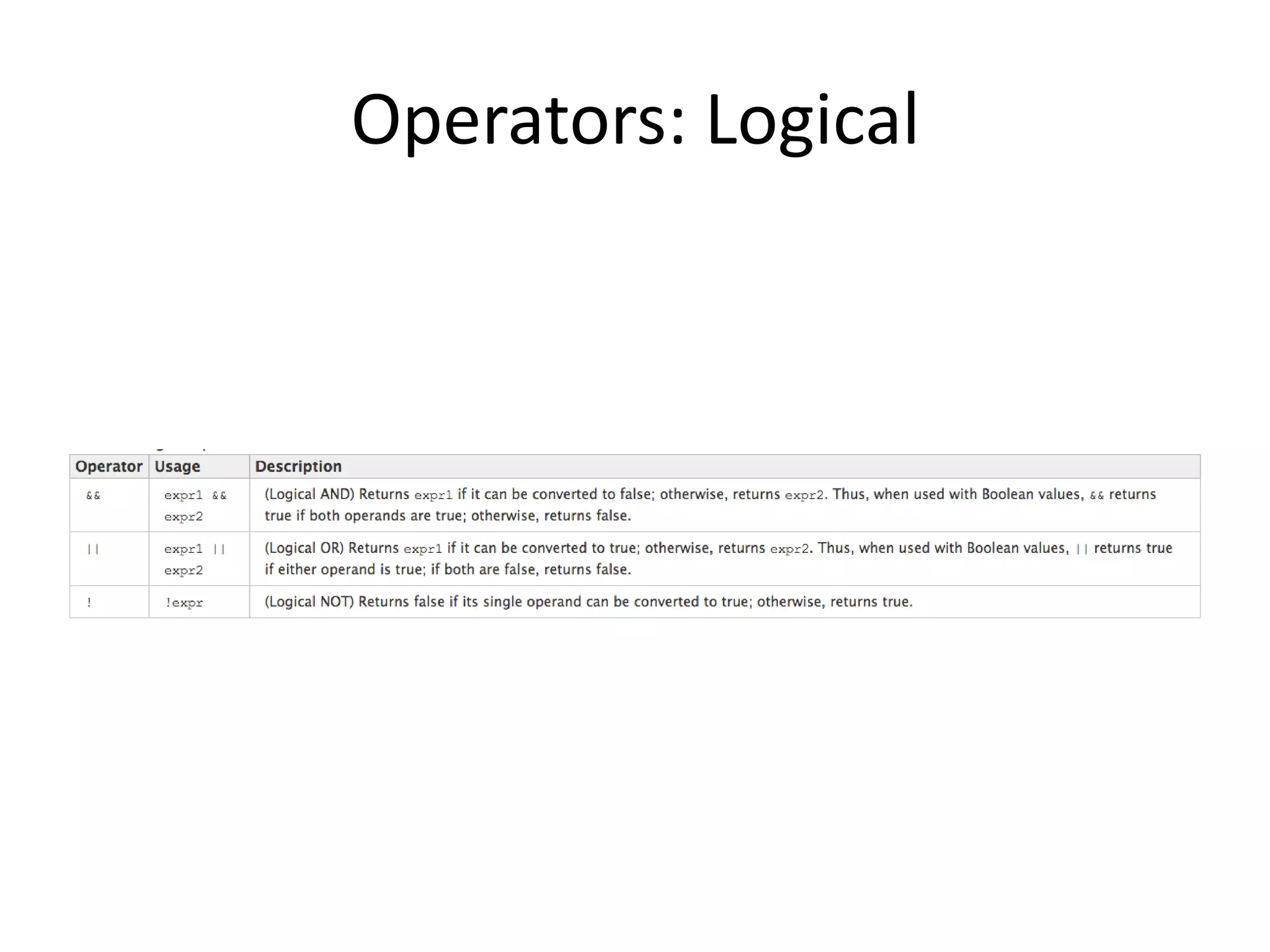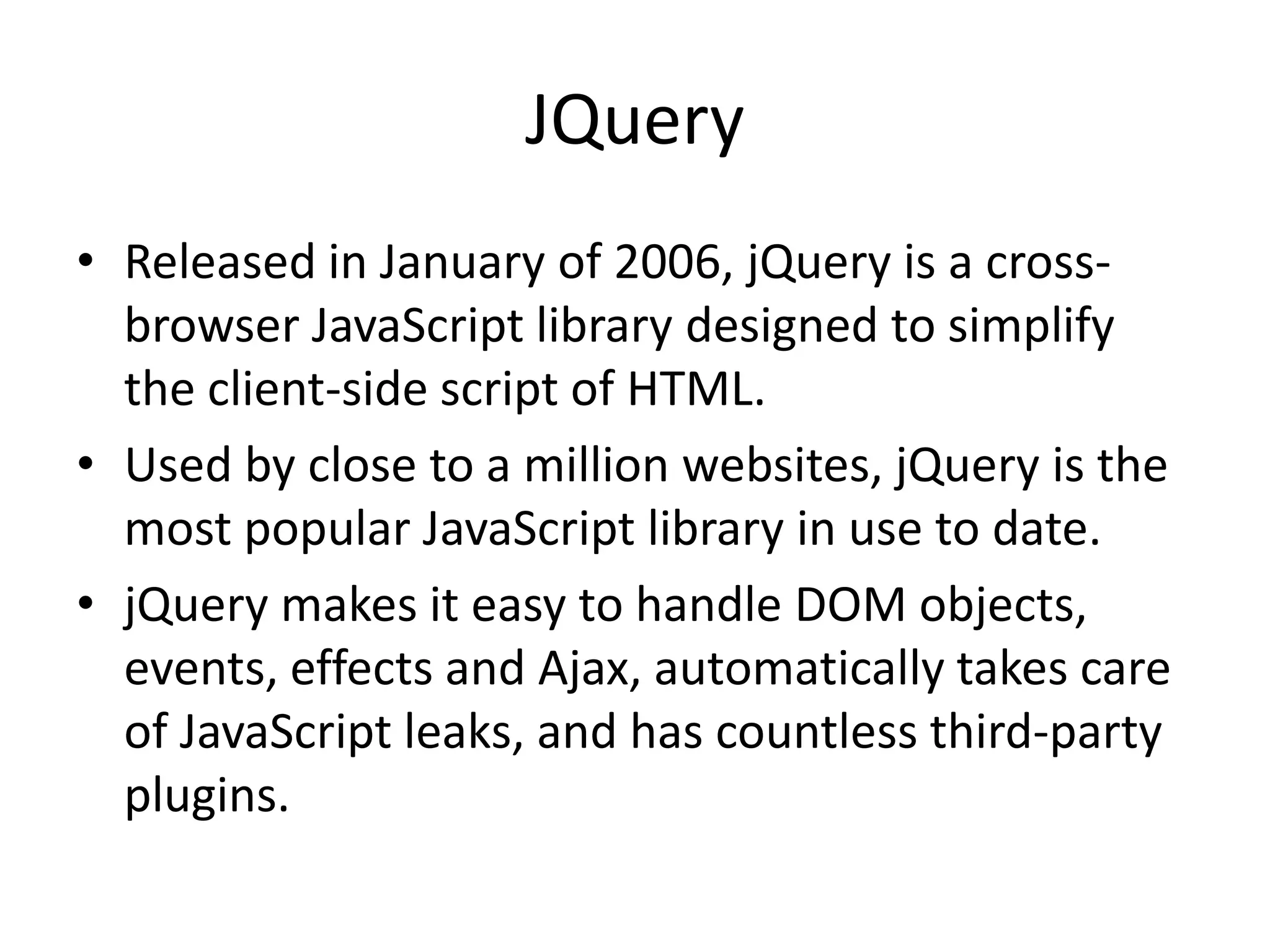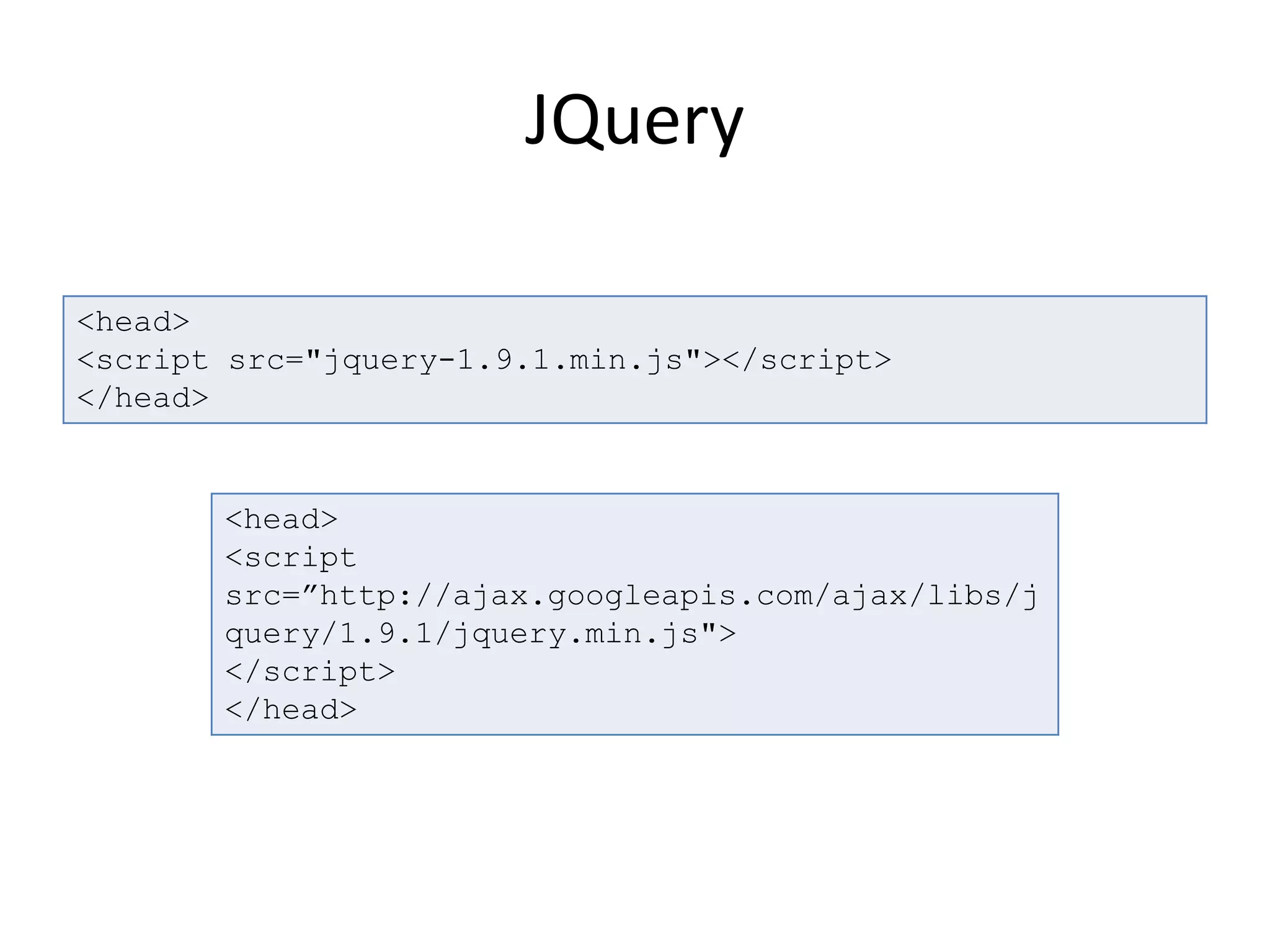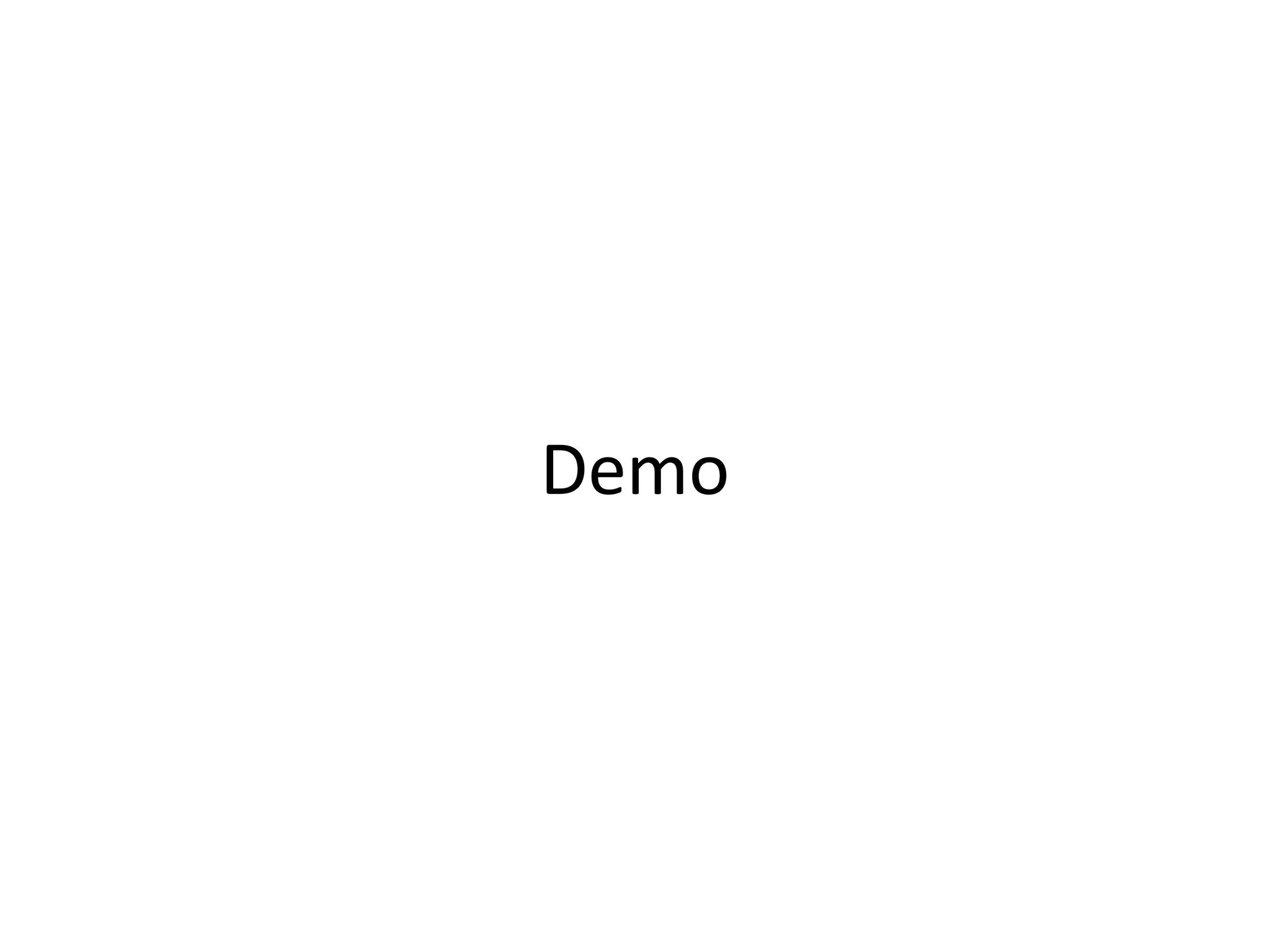JavaScript is the world's most popular programming language. It is used to add interactive effects to web pages. JavaScript code can be inserted into HTML pages between <script> tags. Common JavaScript statements include conditional statements like if/else and loops. Variables are used to store and manipulate data in JavaScript. Common data types include strings, numbers, booleans, arrays, and objects. Functions allow code reuse and organization. Operators are used to assign values, compare values, and perform arithmetic. jQuery is a popular JavaScript library that simplifies DOM manipulation and event handling.


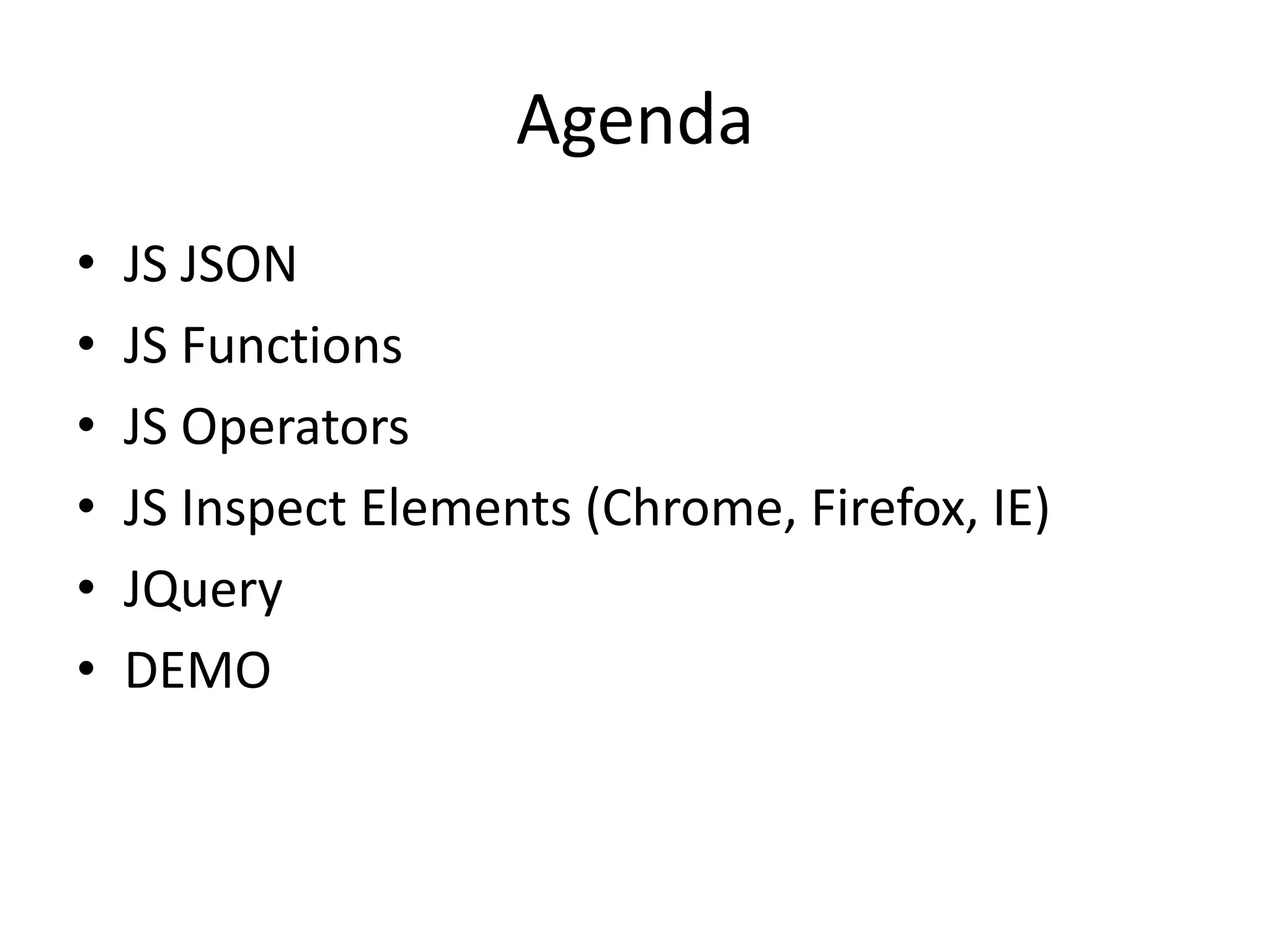
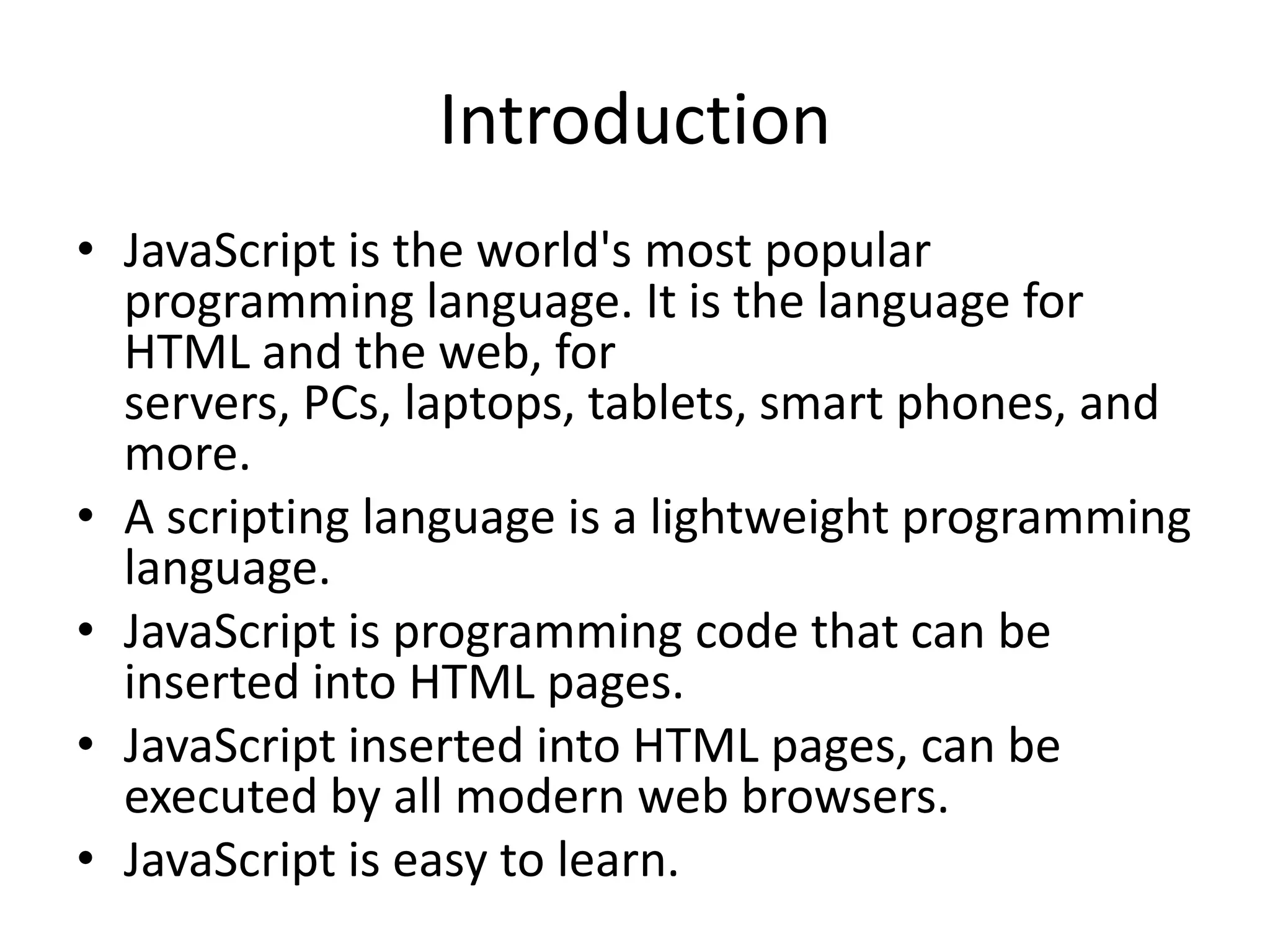

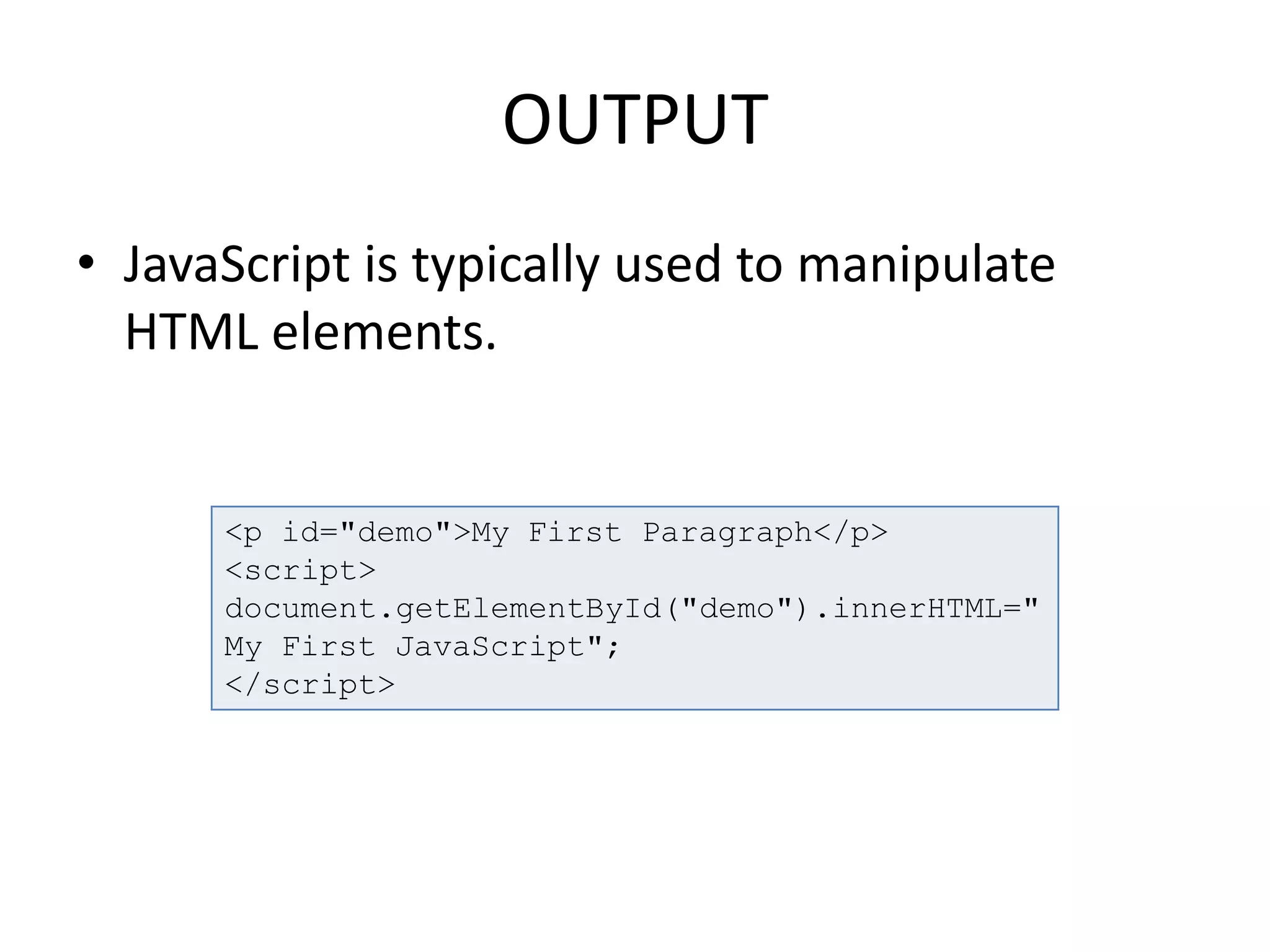
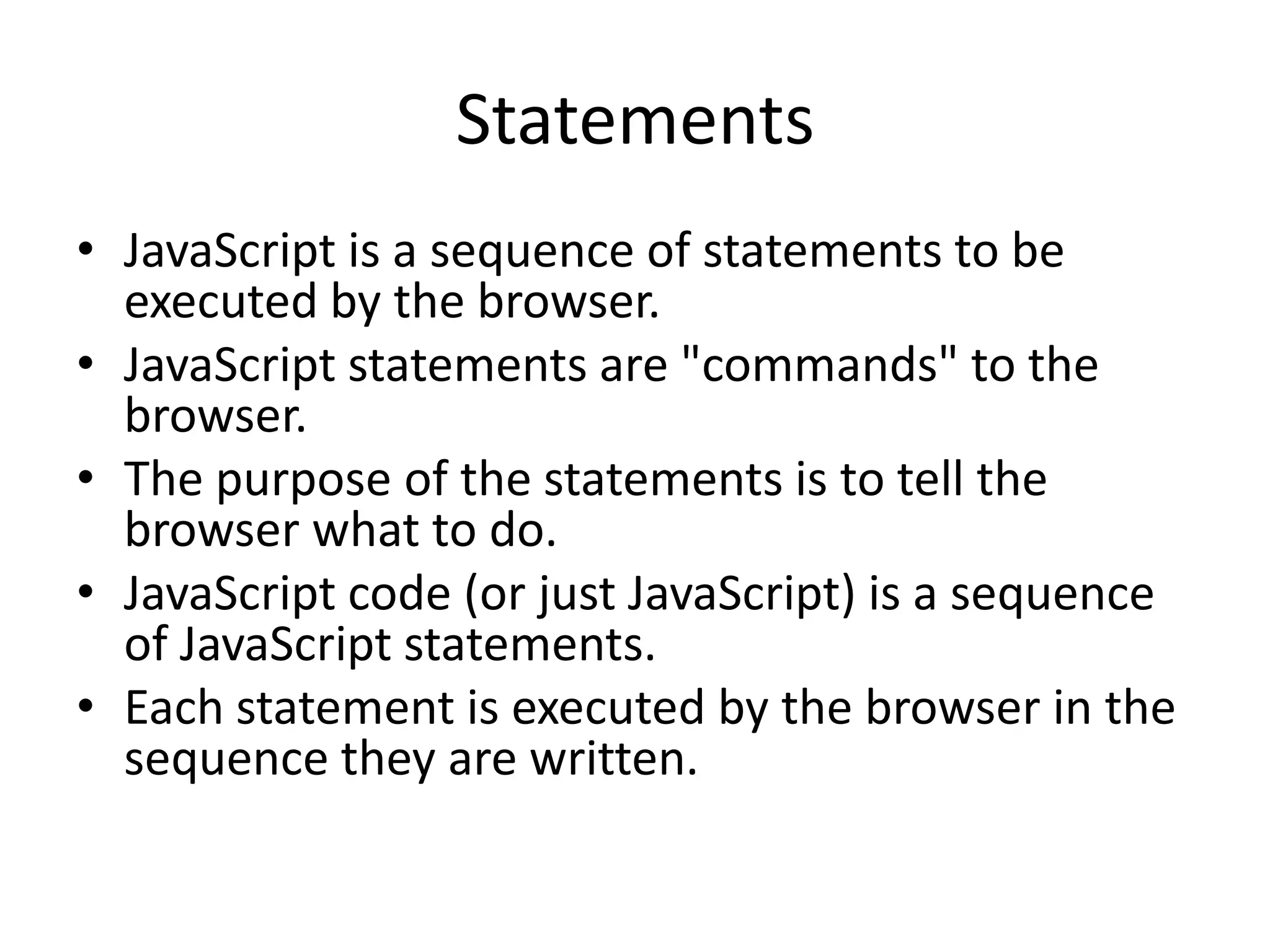
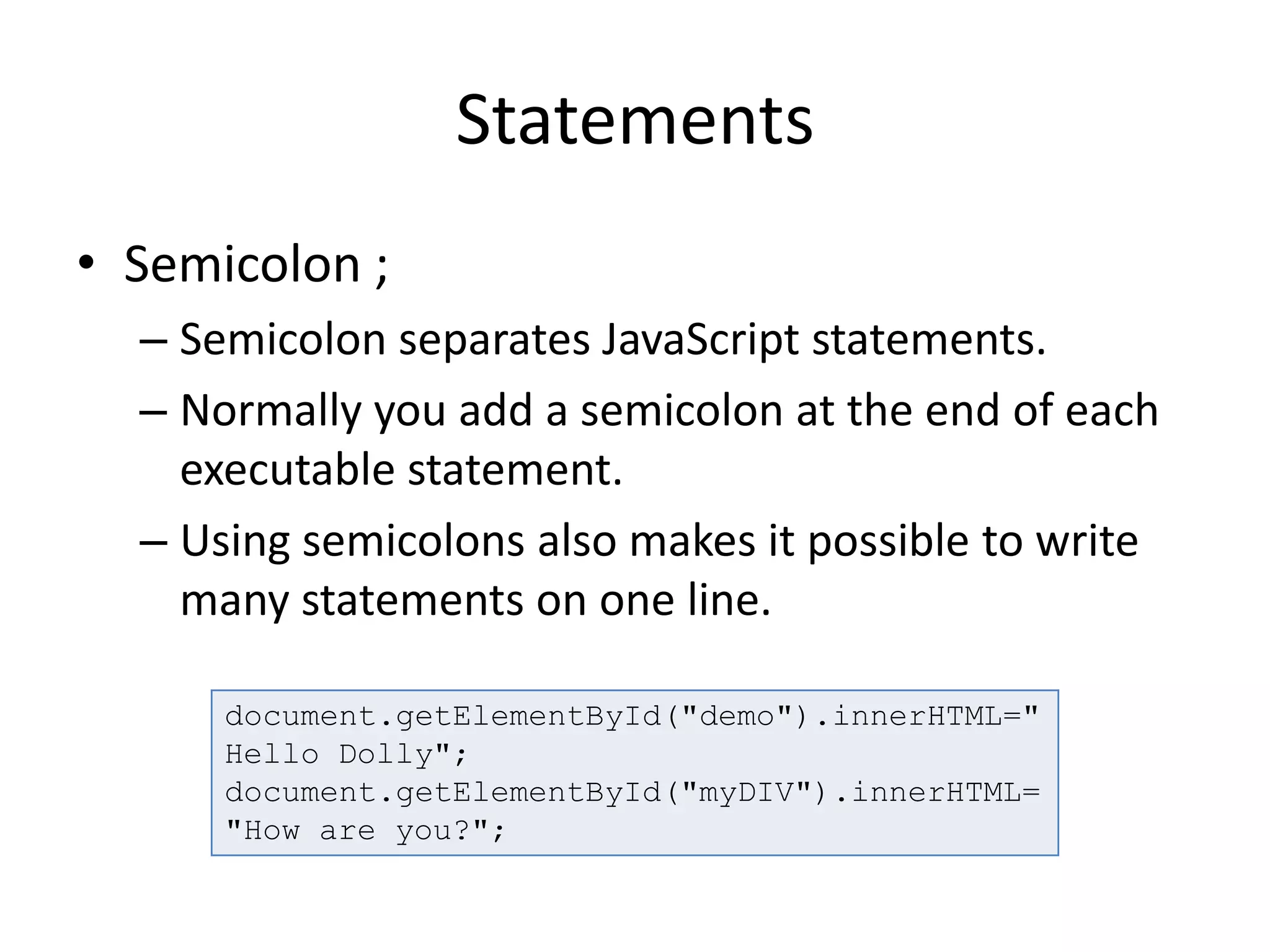

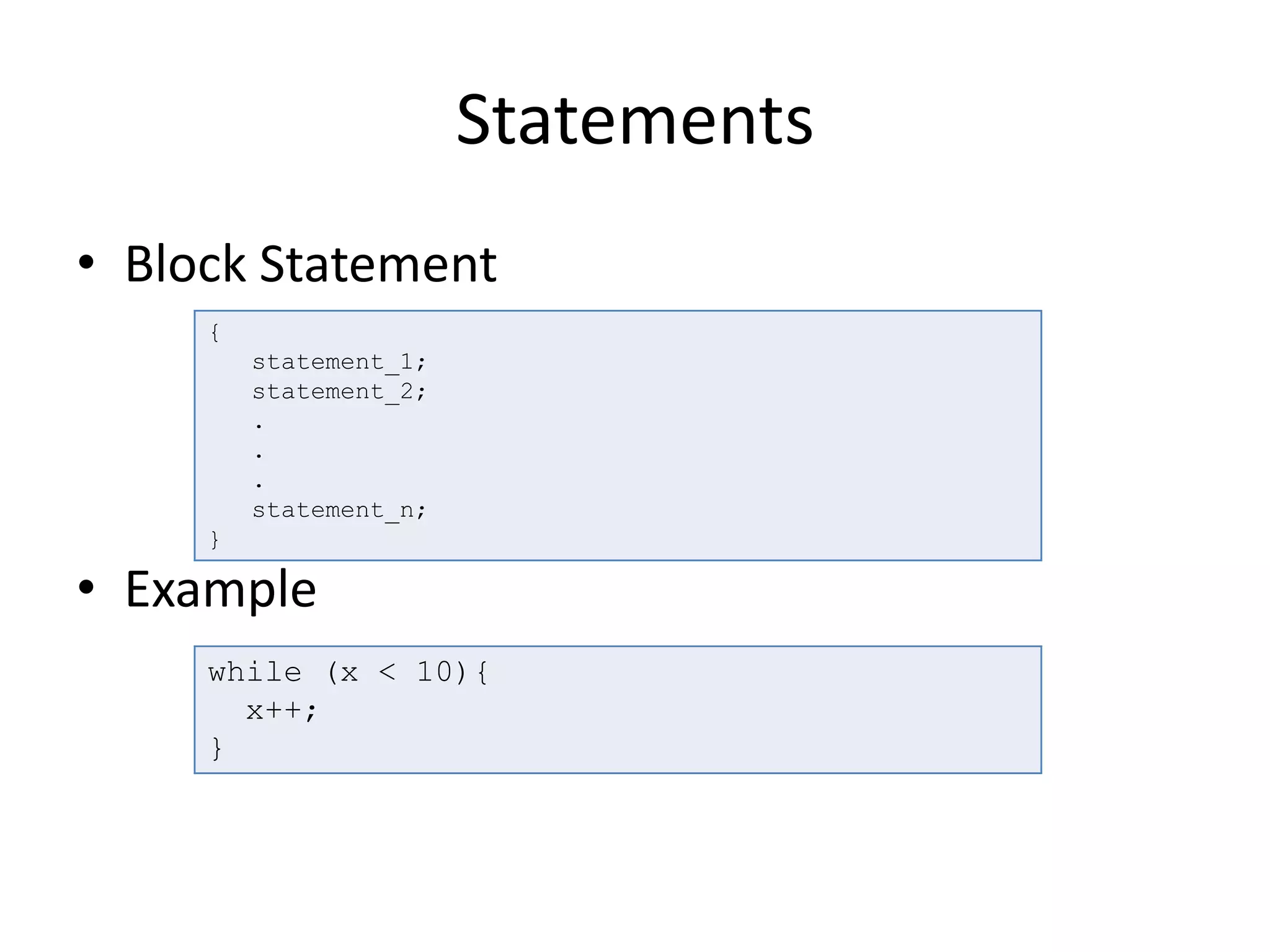
![Statements • Conditional Statements – if...else Statement – switch Statement if (condition) statement_1 [else statement_2] switch (expression) { case label_1: statements_1 [break;] case label_2: statements_2 [break;] ... default: statements_def [break;] }](https://image.slidesharecdn.com/javascript-130616075134-phpapp02/75/JavaScript-Fundamentals-JQuery-11-2048.jpg)
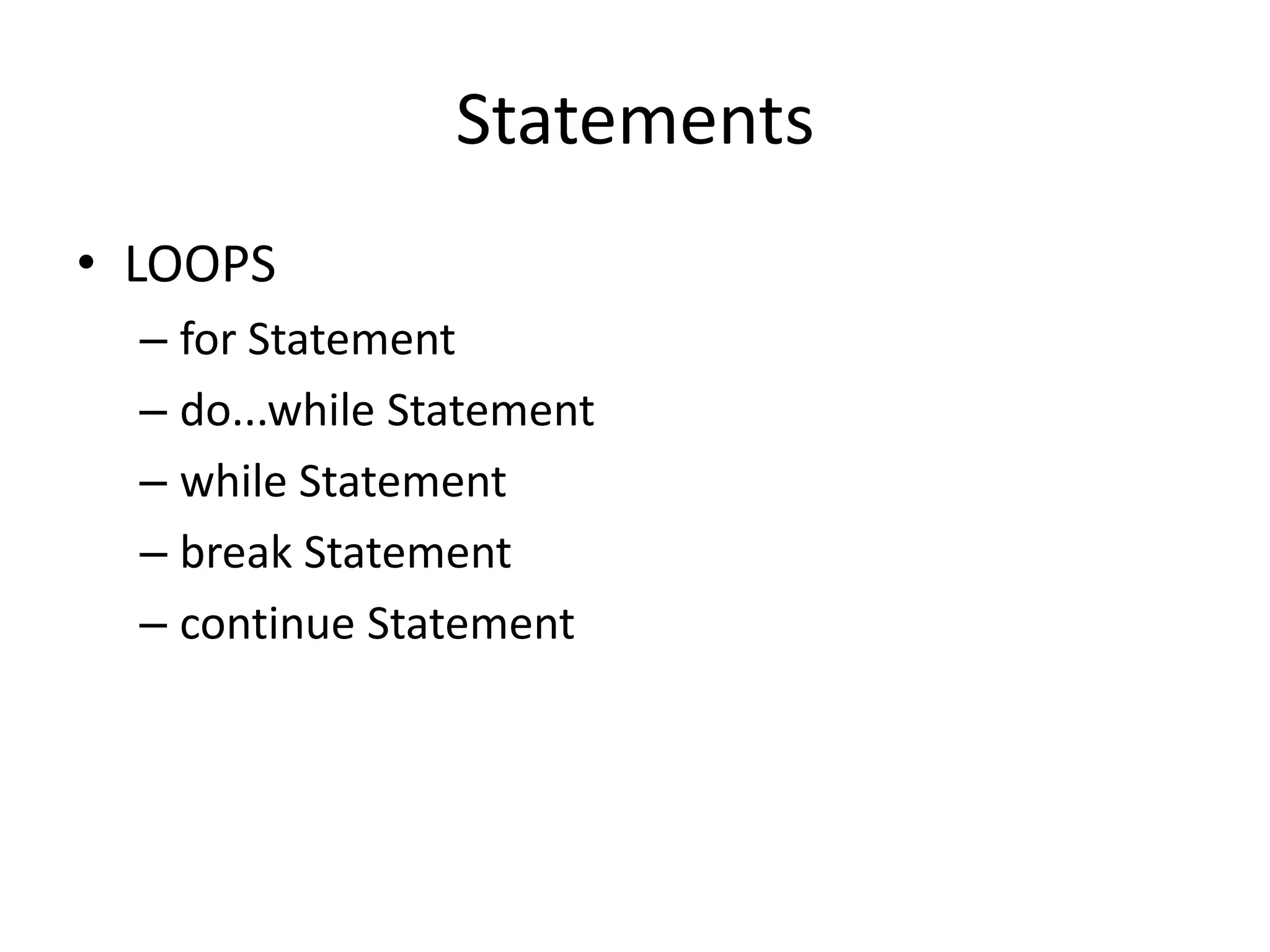
![Statements • Object Manipulation Statements – for...in Statement var obj = {make:"BMW", model:"2013"} function dump_props(obj, obj_name) { var result = ""; for (var i in obj) { result += obj_name + "." + i + " = " + obj[i] + "<br>"; } return result; } document.write(dump_props(obj,"obj"));](https://image.slidesharecdn.com/javascript-130616075134-phpapp02/75/JavaScript-Fundamentals-JQuery-13-2048.jpg)
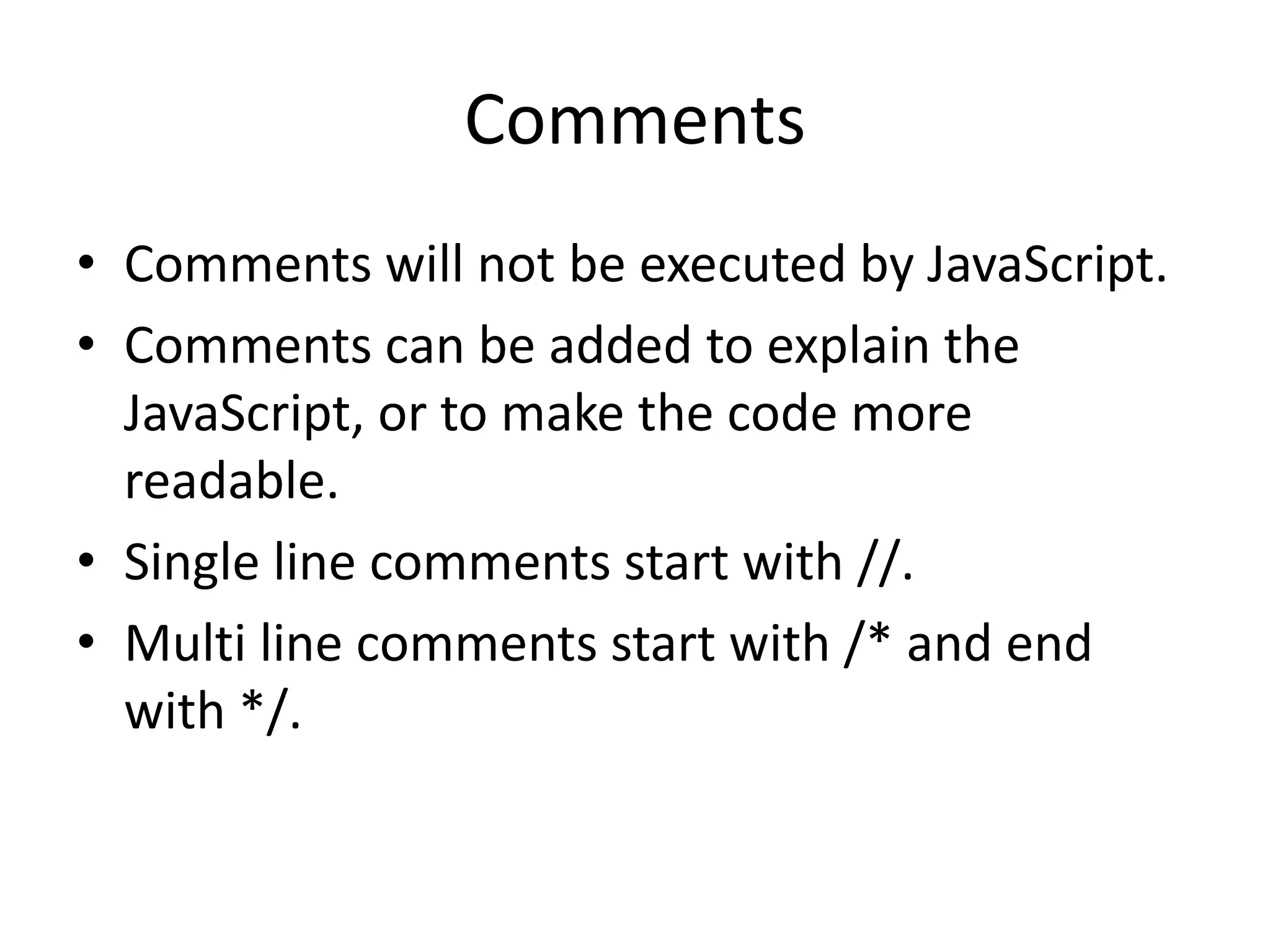
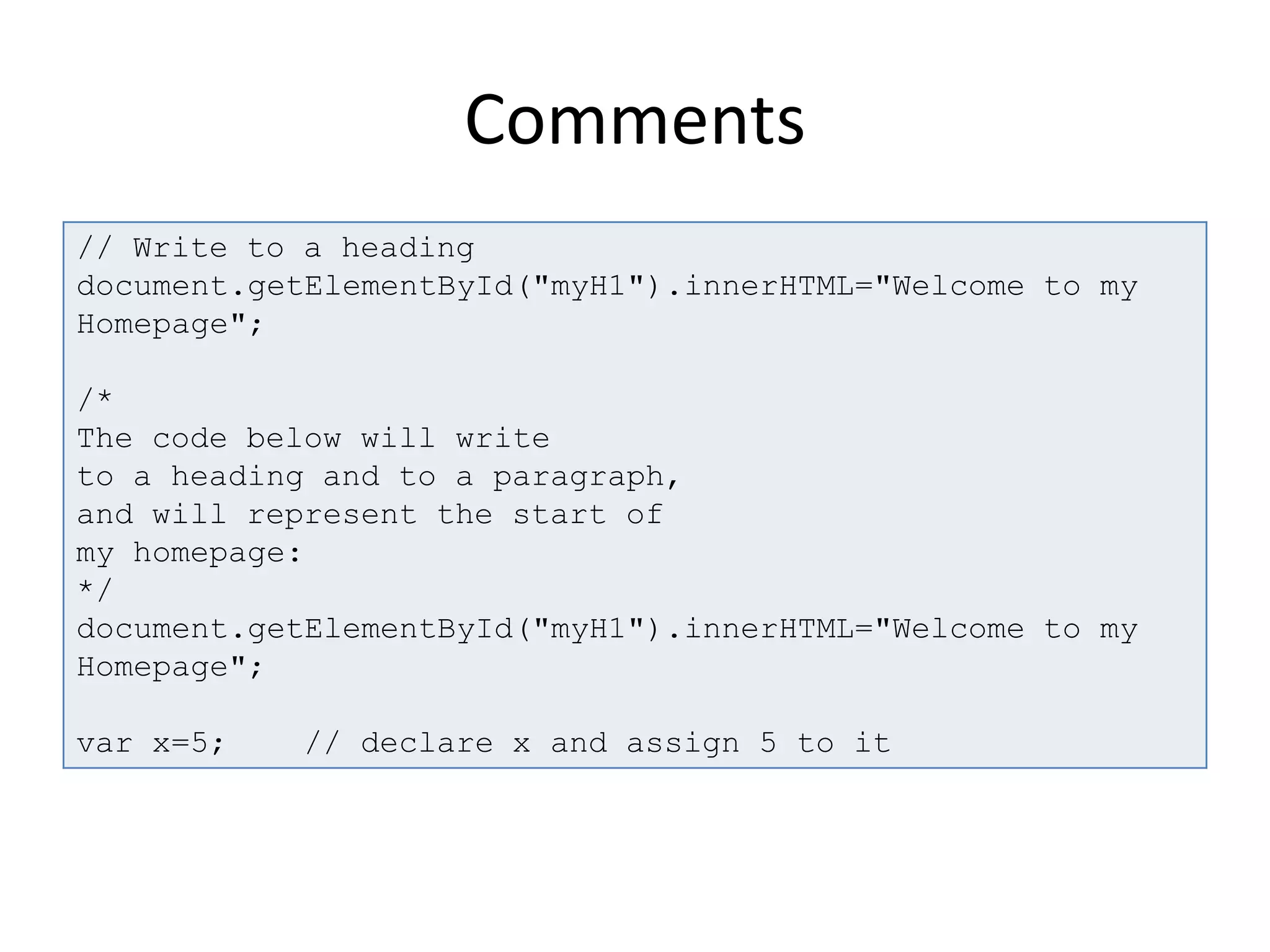
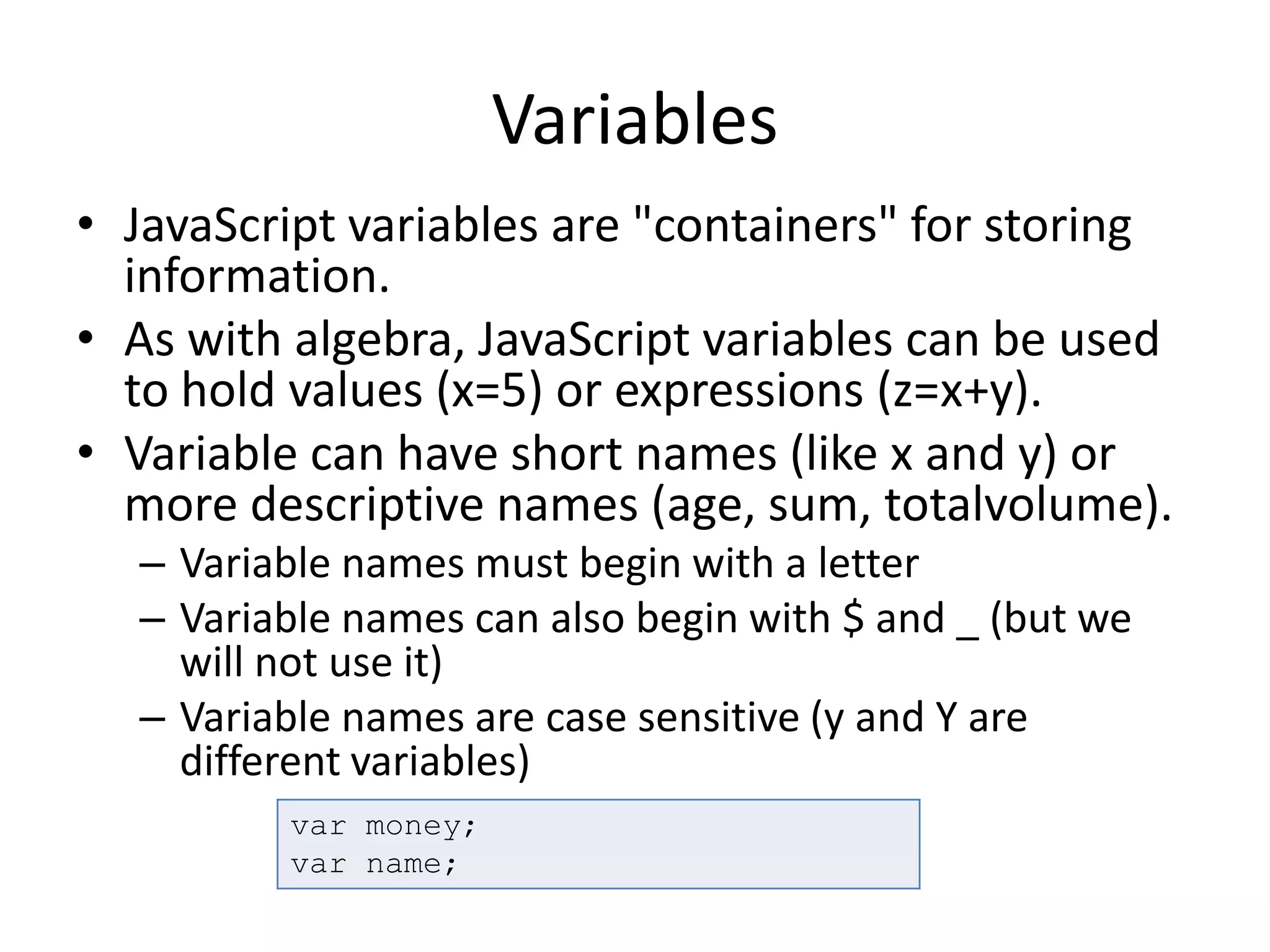
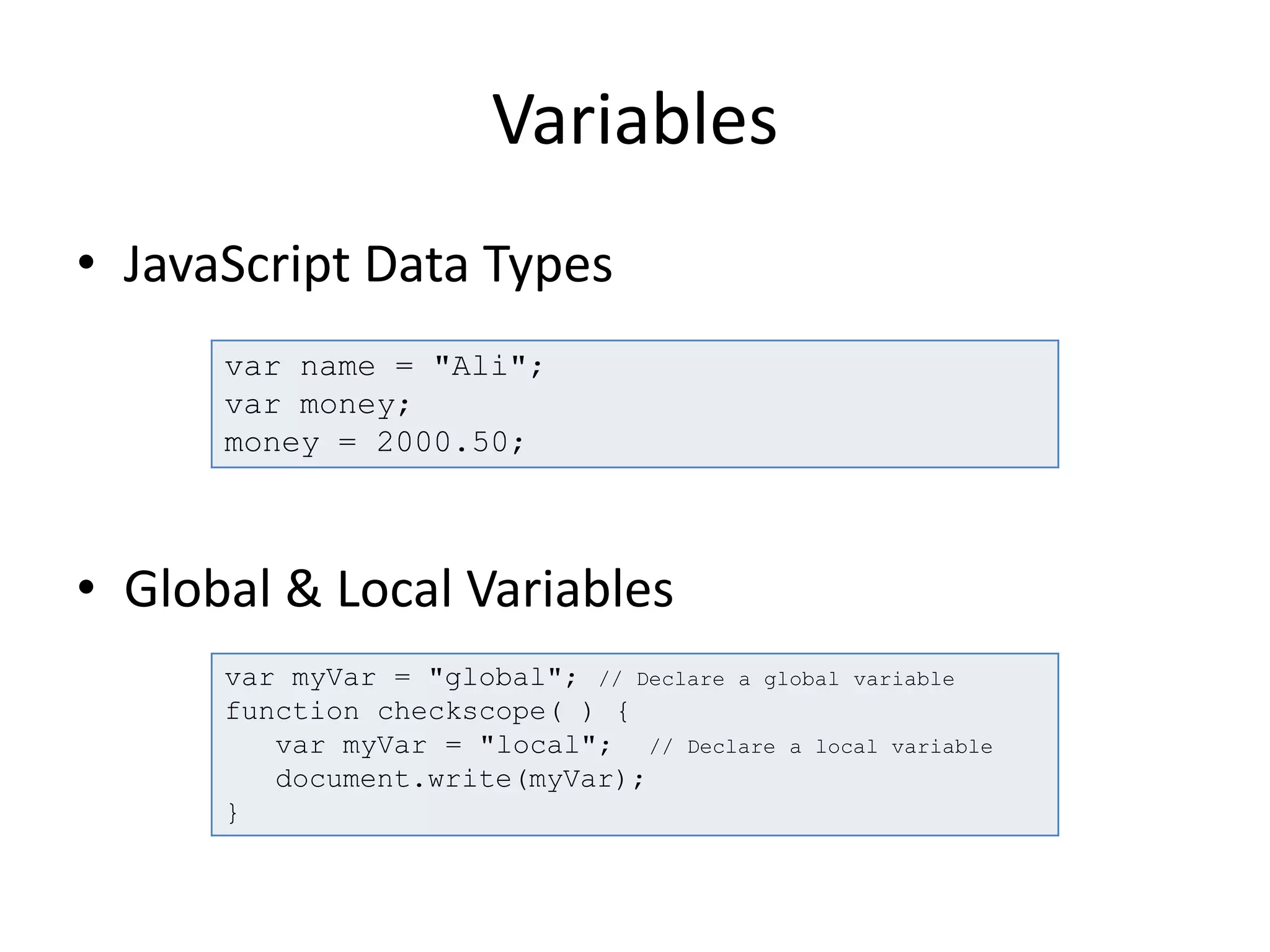
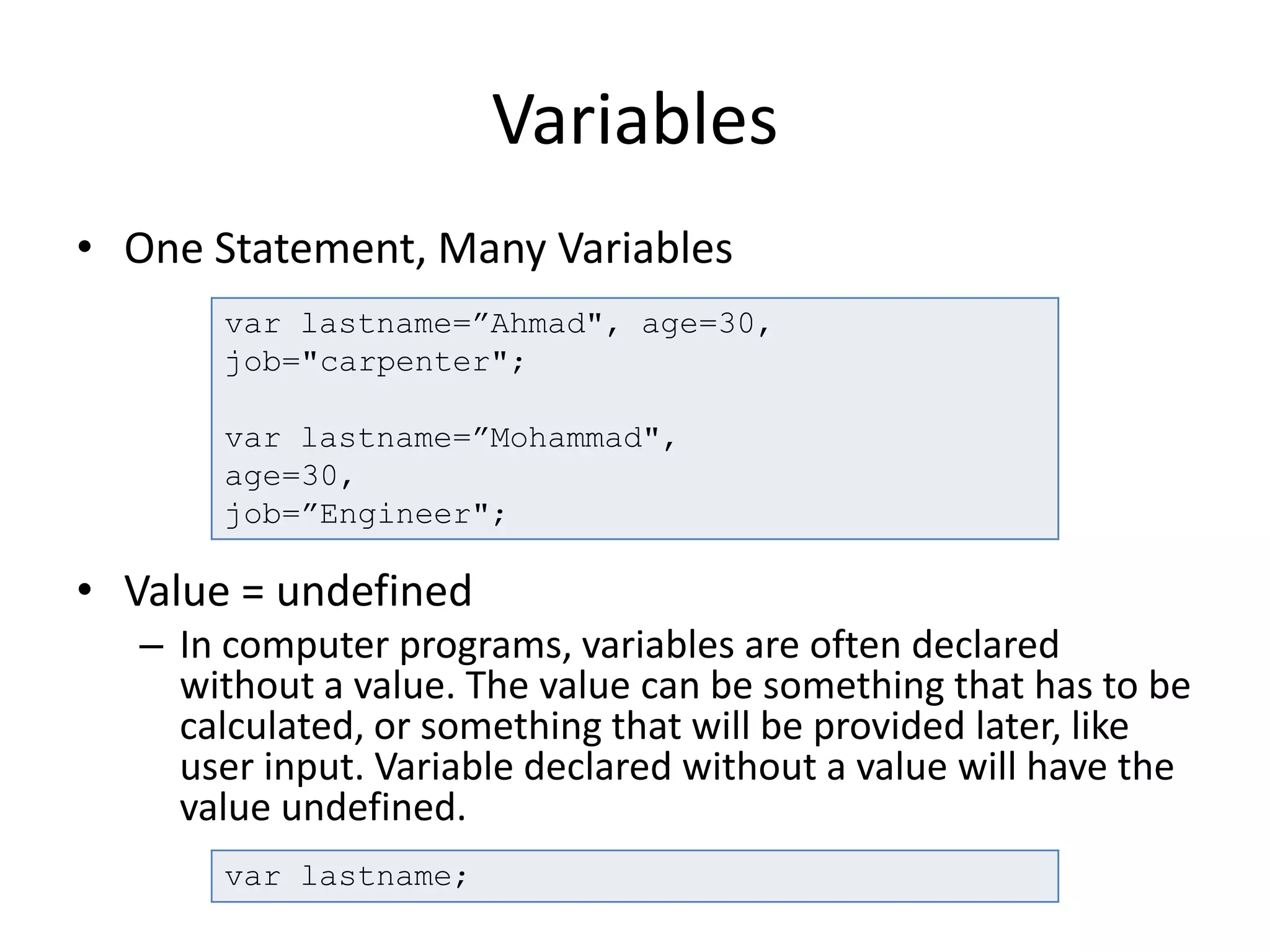
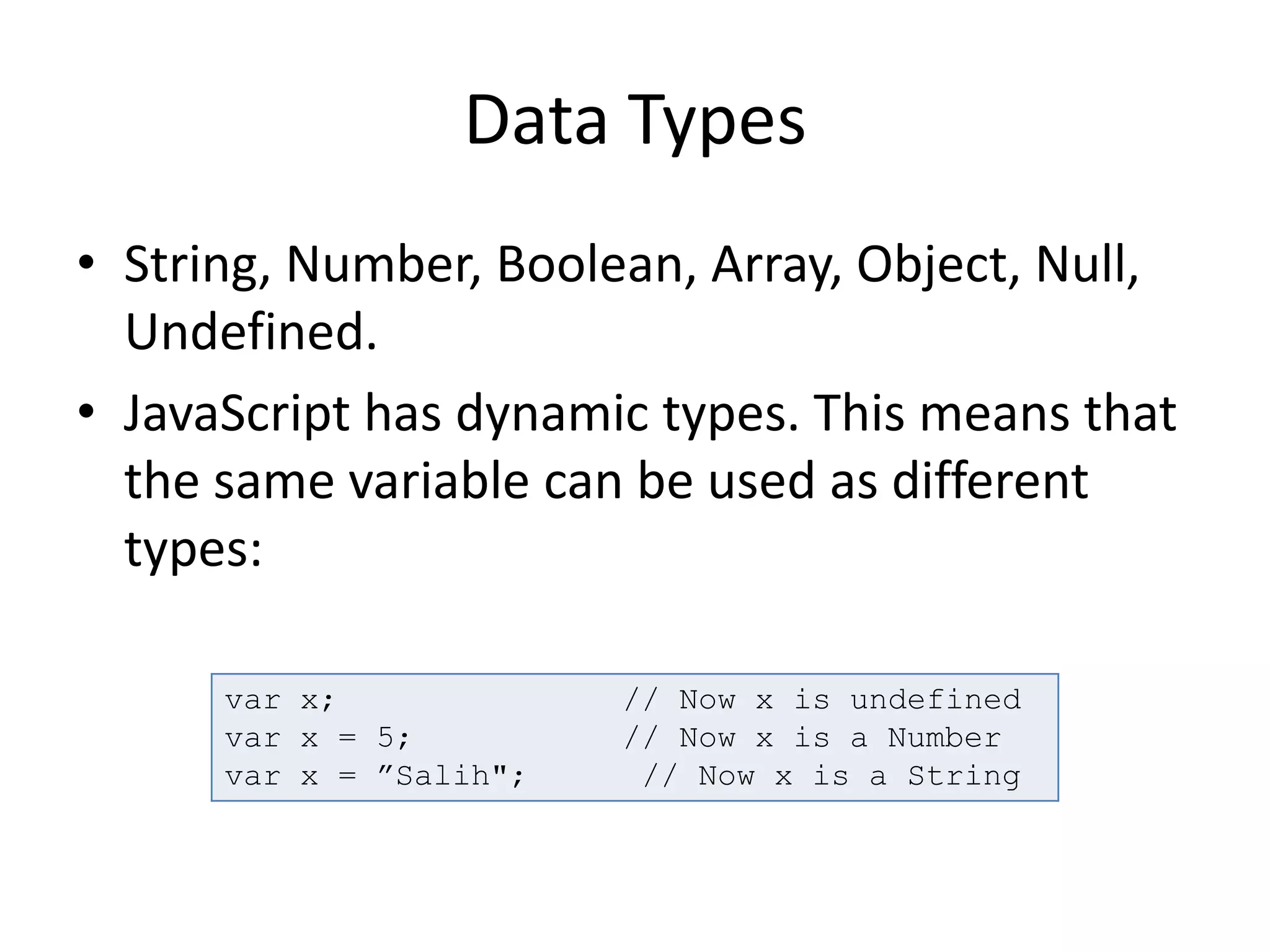
![Data Types • JavaScript Booleans – Booleans can only have two values: true or false. • JavaScript Arrays var x=true; var y=false; var arr = new Array(); arr[0] = ”item 1"; arr[1] = ”item 2"; var arr = new Array(”item1",”item2”); var arr = [“item1", “item2"];](https://image.slidesharecdn.com/javascript-130616075134-phpapp02/75/JavaScript-Fundamentals-JQuery-20-2048.jpg)

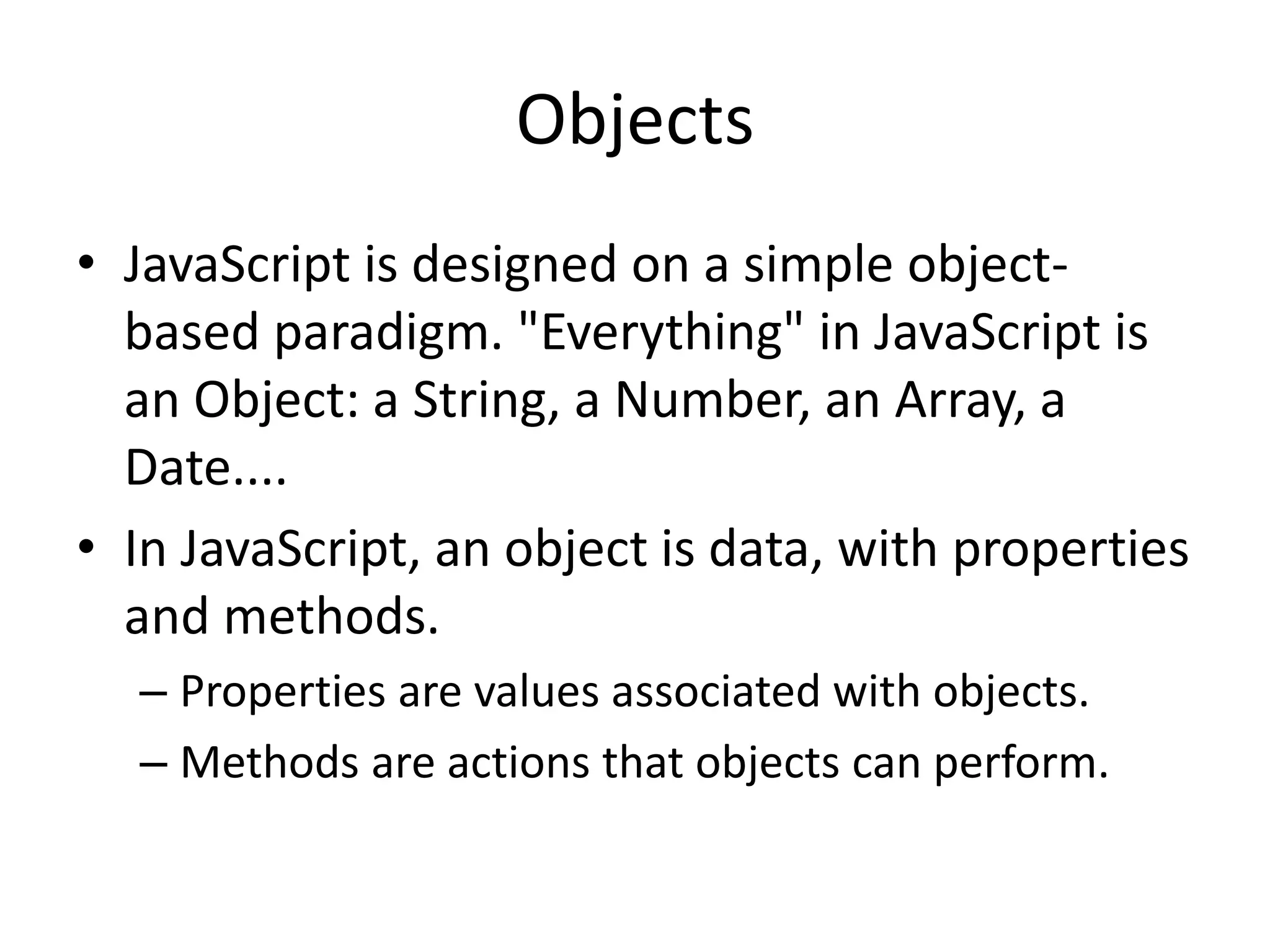
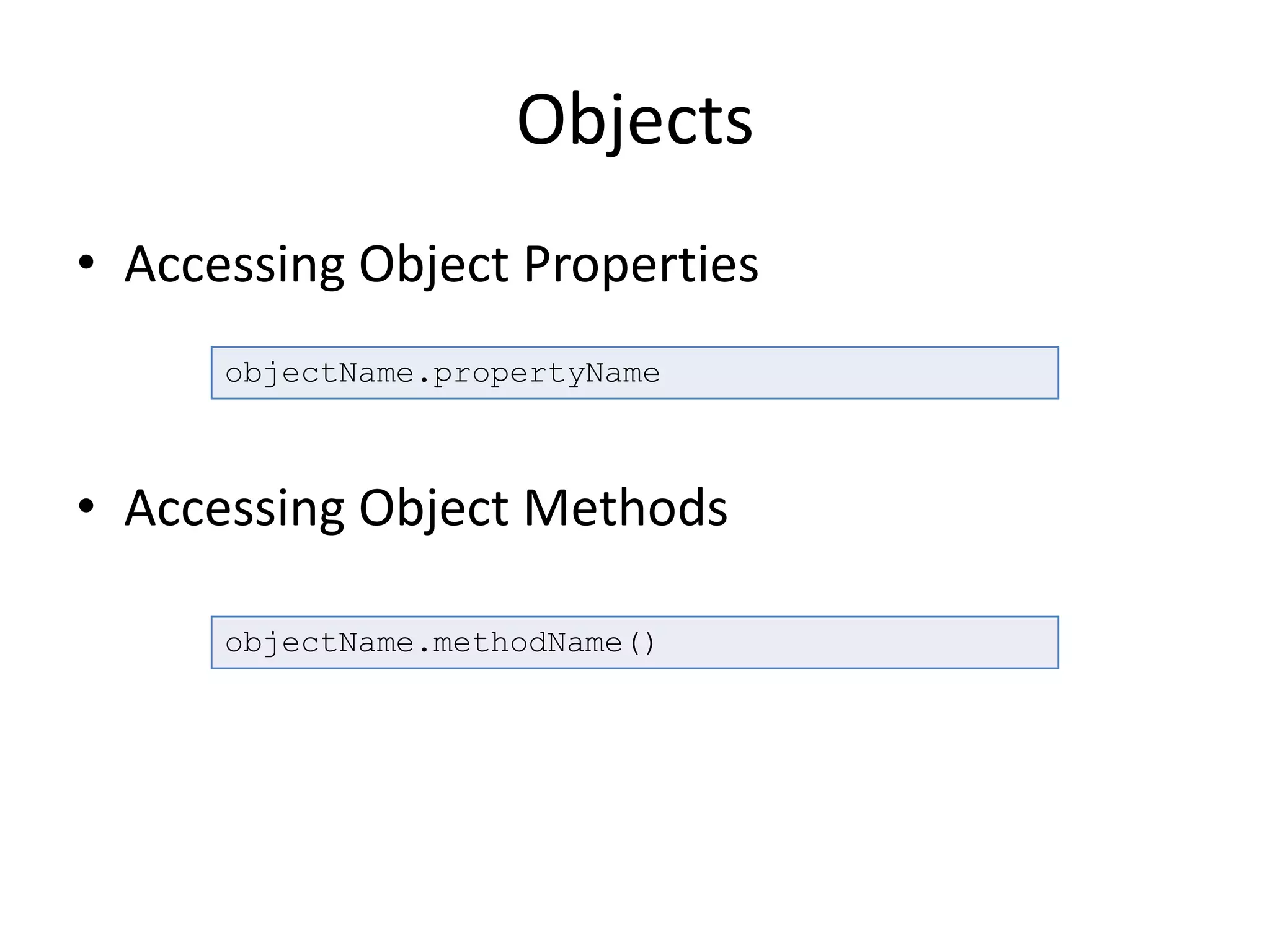
![Objects • Objects in JavaScript, just as many other programming languages, can be compared to objects in real life. var myCar = new Object(); myCar.make = "Ford"; myCar.model = "Mustang"; myCar.year = 1969; myCar.make myCar[“make”]](https://image.slidesharecdn.com/javascript-130616075134-phpapp02/75/JavaScript-Fundamentals-JQuery-24-2048.jpg)
![Objects var myCar = {make:"BMW",model:"s2013",year:"2013"} function showProps(obj, objName) { var result = ""; for (var i in obj) { if (obj.hasOwnProperty(i)) { result += objName + "." + i + " = " + obj[i] + "n"; } } return result; } alert(showProps(myCar,"myCar"))](https://image.slidesharecdn.com/javascript-130616075134-phpapp02/75/JavaScript-Fundamentals-JQuery-25-2048.jpg)

![Arrays <!DOCTYPE html> <html> <head> </head> <body> <script> var years = [1950, 1960, 1970, 1980, 1990, 2000, 2010]; console.log(years[0]); </script> </body> </html>](https://image.slidesharecdn.com/javascript-130616075134-phpapp02/75/JavaScript-Fundamentals-JQuery-27-2048.jpg)
![JSON • JSON is a subset of the object literal notation of JavaScript. Since JSON is a subset of JavaScript, it can be used in the language var myJSONObject = {"bindings": [ {"ircEvent": "PRIVMSG", "method": "newURI", "regex": "^http://.*"}, {"ircEvent": "PRIVMSG", "method": "deleteURI", "regex": "^delete.*"}, {"ircEvent": "PRIVMSG", "method": "randomURI", "regex": "^random.*"} ] }; myJSONObject.bindings[0].method // "newURI"](https://image.slidesharecdn.com/javascript-130616075134-phpapp02/75/JavaScript-Fundamentals-JQuery-28-2048.jpg)
